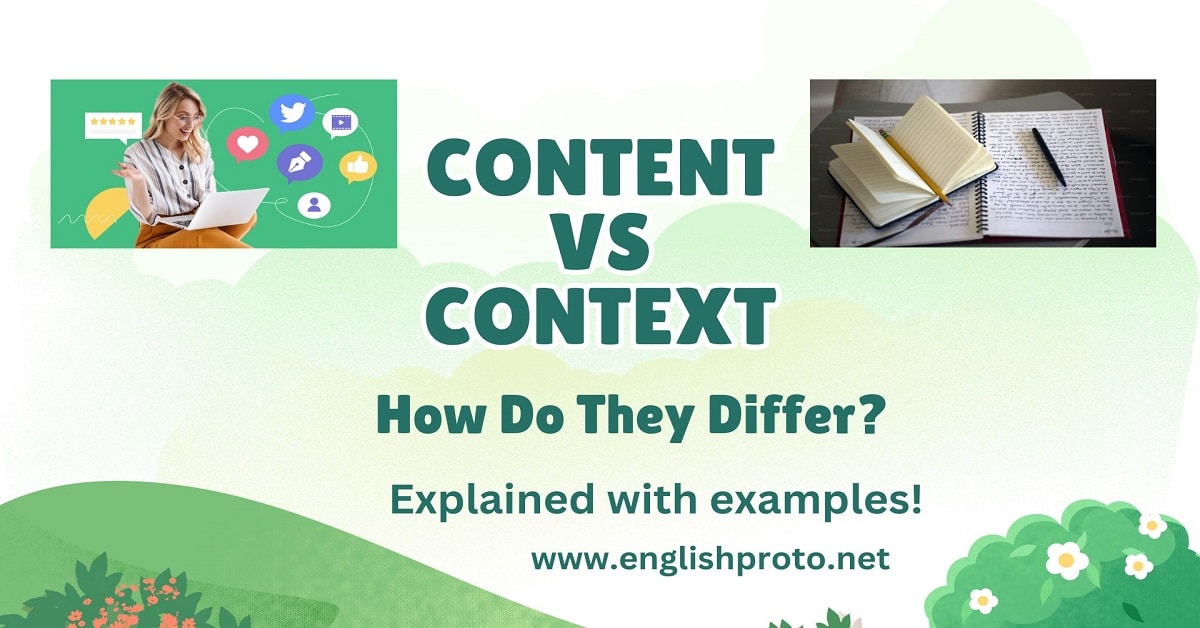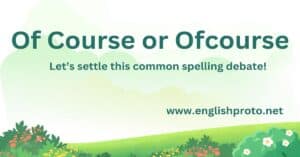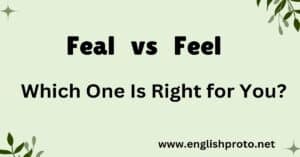Content vs Context – have you ever stopped to think about how these two simple words can completely transform the way your message is understood?
Whether you’re crafting an email, writing a blog, or having a casual chat, knowing the difference between content and context can mean the difference between clarity and confusion. This isn’t just about grammar; it’s about connecting with your audience in a way that sticks.
If you’ve ever felt misunderstood or struggled to get your point across, this article is for you. We’ll break down the mystery of content vs context with practical examples and tips you can use immediately. Let’s dive in and ensure your communication always hits the mark.
Quick Summary
Content refers to the actual material, information, or substance being presented or discussed. It’s the tangible elements that make up a piece of work, such as words, images, data, or ideas.
Context encompasses the circumstances, background, environment, and surrounding conditions that give meaning to the content. It provides the framework through which content is interpreted and understood.
Key Takeaways
- Content is self-contained and can exist independently
- Context provides meaning and relevance to content
- Without context, content may be misinterpreted
- The same content can have different meanings in different contexts
Why These Terms Matter
In today’s digital age, the distinction between content and context has become increasingly important. Social media posts, news articles, and professional communications can be easily shared and redistributed, sometimes losing their original context in the process. This “context collapse” can lead to misunderstandings and misinterpretations.
Understanding Content
What Constitutes Content?
Content encompasses various forms of information and material:
- Written text (articles, books, messages)
- Visual elements (images, videos, illustrations)
- Audio material (podcasts, music, speeches)
- Data (statistics, numbers, research findings)
Characteristics of Content
Content is:
- Tangible and measurable
- Can be created and curated
- Subject to copyright and ownership
- Can be stored and archived
- Transferable across different mediums
Understanding Context
Elements of Context
Context includes several key dimensions:
Cultural Context: Social norms, beliefs, and cultural practices that influence interpretation
Historical Context: Time period, historical events, and circumstances surrounding the content
Physical Context: Location, environment, and physical circumstances
Situational Context: Immediate circumstances and conditions
Relational Context: Relationships between communicators and their audience
The Interplay Between Content and Context
Understanding how content and context work together is essential for effective communication. Here’s a practical example:
Consider the phrase “I’m fine.”
Content: The literal words “I’m fine”
Context variations:
- Said with a smile after recovering from a minor illness
- Said through tears after an emotional event
- Said sarcastically after a disappointment
- Written in response to a formal inquiry about health
The same content takes on entirely different meanings depending on the context.
Common Misconceptions
Misconception 1: Content Is All That Matters
Many people focus solely on creating or consuming content without considering the importance of context. This can lead to:
- Misinterpretation of information
- Failed communication attempts
- Lost nuances and subtleties
- Unintended consequences
Misconception 2: Context Can Be Ignored
Some believe that well-crafted content can stand alone without context. However, this overlooks:
- Cultural differences
- Historical significance
- Situational relevance
- Audience expectations
Practical Applications
In Professional Settings
Content Considerations:
- Clear and accurate information
- Professional tone and language
- Relevant data and facts
- Appropriate formatting
Contextual Considerations:
- Company culture and values
- Industry standards and practices
- Audience expertise level
- Timing and circumstances
In Academic Writing
Content Requirements:
- Research findings
- Theoretical frameworks
- Methodology
- Data analysis
Contextual Elements:
- Previous research
- Academic discourse
- Research limitations
- Theoretical background
In Digital Communication
Content Aspects:
- Social media posts
- Blog articles
- Email messages
- Digital marketing materials
Contextual Factors:
- Platform conventions
- Audience demographics
- Current events
- Digital trends
Best Practices for Balancing Content and Context
- Know Your Audience
- Understand their background
- Consider their needs
- Anticipate their expectations
- Provide Necessary Context
- Include relevant background information
- Explain assumptions
- Clarify references
- Create Clear Content
- Use appropriate language
- Organize information logically
- Present ideas coherently
- Consider the Medium
- Adapt content to the platform
- Account for technical limitations
- Follow platform conventions
The Evolution of Content and Context
Historical Perspective
Traditionally, content and context were more closely tied together. Books were read in their entirety, newspapers provided comprehensive coverage, and communication was more linear and controlled.
Digital Age Impact
The digital revolution has:
- Separated content from its original context
- Created new contexts for content consumption
- Enabled content reuse and repurposing
- Changed how context is preserved and transmitted
Future Implications
Emerging Trends
- Artificial Intelligence
- AI-generated content
- Contextual analysis capabilities
- Automated content adaptation
- Virtual Reality
- Immersive content experiences
- New forms of contextual engagement
- Enhanced content-context integration
- Cross-Cultural Communication
- Global content distribution
- Cultural context preservation
- Translation and localization challenges
Real-World Examples
Example 1: News Media
Content: A news article about economic data Context: Current political climate, historical trends, global events
Example 2: Social Media
Content: A personal photo Context: Platform used, audience, timing, cultural moment
Example 3: Business Communication
Content: A quarterly report Context: Industry conditions, company history, market expectations
Conclusion: Content vs Context
Understanding the distinction between content and context is essential for effective communication in our increasingly complex and interconnected world.
While content provides the substance of our messages, context gives them meaning and relevance. Success in communication depends on mastering both elements and understanding their relationship.
The digital age has both complicated and enriched the interplay between content and context, making it more important than ever to consider both aspects in our communications.
Whether in professional, academic, or personal settings, the ability to create appropriate content and provide relevant context is a crucial skill for effective communication.
Remember that neither content nor context alone is sufficient for effective communication – it’s the thoughtful combination of both that leads to clear, meaningful, and impactful communication.



